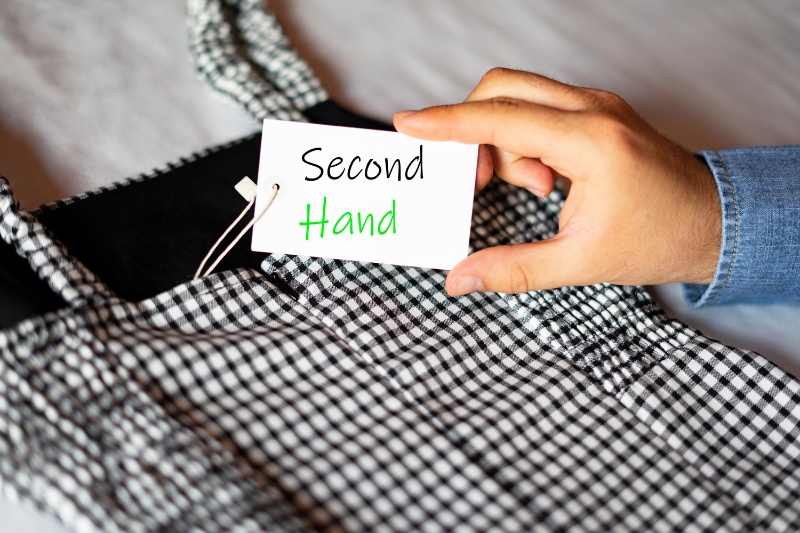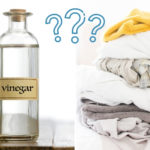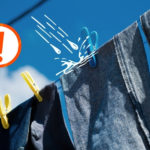Buying second-hand clothes isn’t just cheaper, it’s a way of staying on top of trends without having to fork out too much hard-earned cash!
Whether you want a pair of parachute pants from the 80s or a leather jacket like Blondie rocked, you’ll find it in a pre-loved clothes shop.
With so many unique and affordable pieces to choose from, shopping thriftily is definitely the way forward! Plus, it’s better for the environment, which is always a bonus!
But the burning question is… Can you wear second-hand items as soon as you’ve bought them, or do you need to clean your pre-owned clothes first?
Find out the answer and more below!
Do You Need to Wash Pre-Owned Clothes Before Wearing Them?
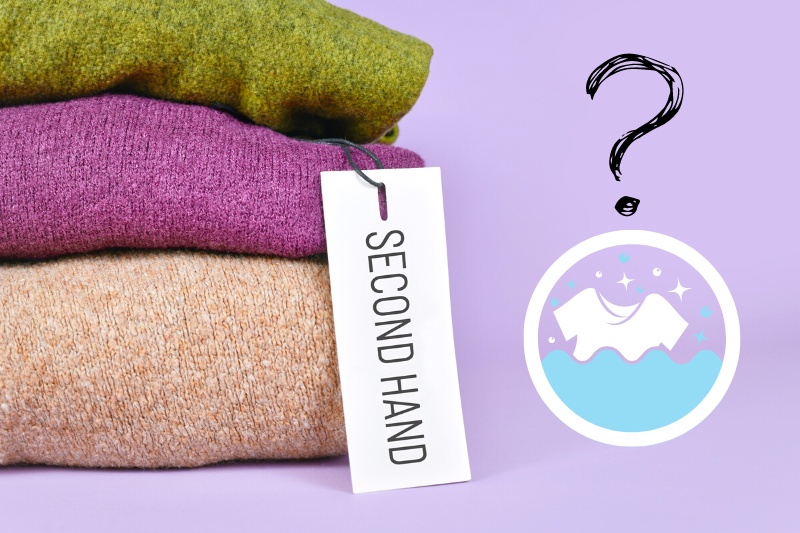
Yes, you do need to wash second-hand clothes before you wear them.
Why?
In short, you don’t know the history of the clothes (where they’ve been, who’s worn them, what stains are on the items or what allergies the owner might’ve had), the outfits will likely be covered in germs and bacteria (some things more than others), and the garments will probably be smelly.
If you were to wear the clothes without washing them, you don’t know what dirt you could be transferring onto yourself/your other garments, you could have a reaction to the outfit, and you mind find the aroma coming off the material very displeasing.
Washing the clothes is the only way to ensure that the garments are sanitary, hygienic, smell relatively clean, and are okay to wear.
Things to Keep in Mind
When buying, handling or cleaning pre-loved clothes, you should keep the following points in mind:
Deal with stains before they get worse!
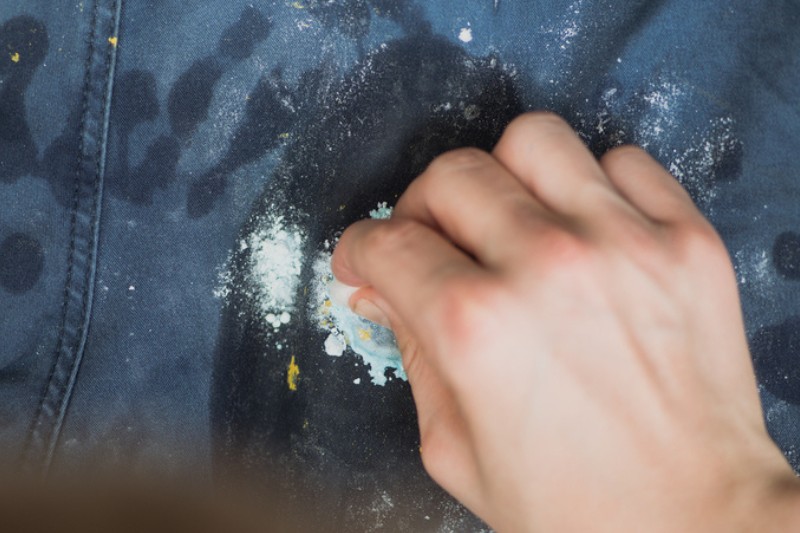
Unfortunately, pre-loved clothes are often plagued by ancient stains that are usually hard to remove but not impossible!
To treat stains, you must first figure out what kind of material you’re cleaning and then discover what type of stain you have.
If you’re dealing with hard-wearing materials, like cotton, you should be able to treat them with a biological detergent that is packed with enzymes (the enzymes will break down the stain for you).
However, if you’re dealing with something more delicate, you will have to use a mild detergent to treat the blemishes. For example, if you were cleaning wool or silk, you could use Ecover Delicate Laundry Liquid for Wool & Silk.
In addition, you may be able to treat the stains with an official stain remover, but as mentioned above, you must choose something suitable that won’t damage the fabric you’re cleaning.
(If you really can’t remove a stain, there’s always a workaround. You can patch the piece over, for example).
Mend the outfit before you clean it!
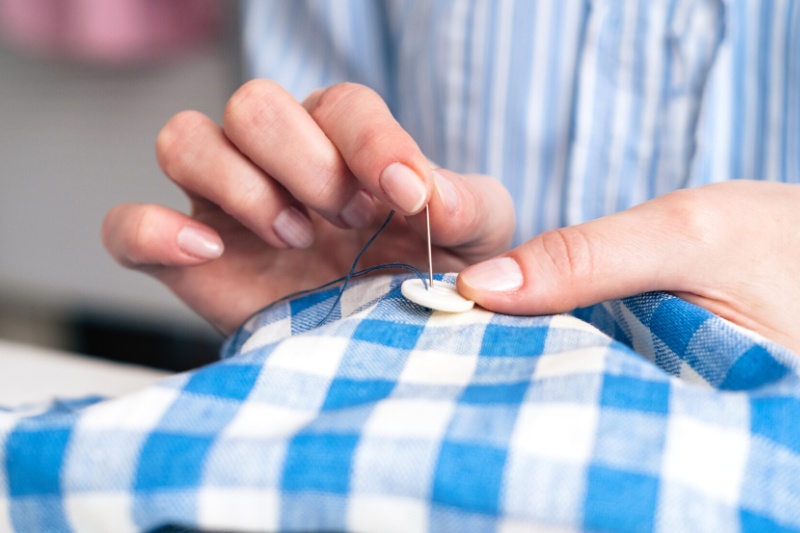
Stains are a common sight on thrift store clothes, but holes, rips, loose threads, snags and missing buttons also like to put in an appearance.
So, before you buy a second-hand piece, give the item a quick look over to see what repairs need doing because you’ll need to carry out this work before you wash your new clothes.
It’s possible to fix up most garments at home, either by stitching the material back together, re-dyeing the fabric, adding new embellishments, or popping a patch repair on a piece.
Modernising and putting your stamp on a used garment can be fun, so don’t knock it until you try it!
Don’t store your pre-loved items until you’ve cleaned them properly!
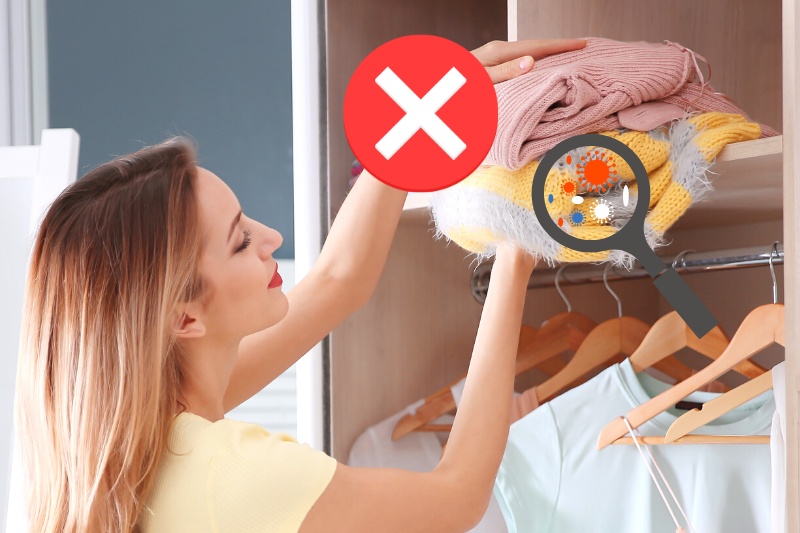
You must, must, must clean your new-but-used garments before you pop them in your wardrobes/drawers alongside your other clothes!
Any germs, bacteria, and creepy crawlies (although rare) that are on your just-bought clothes will find their way onto your existing items and will contaminate them. As a consequence, you’ll have to clean and perhaps treat your other outfits, which is just needless work.
So, wash your pre-owned clothes and then store them.
Wash second-hand clothes on their own
This will stop mould, bacteria, bugs and odours from transferring over and contaminating your other garments during the washing process.
As mentioned above, it’s always a good idea to check pre-loved garments before you buy them, so you know what type of stains and repairs you’ll also have to do.
In addition, you should also check all the pockets on your new garments because you never know where a rogue tissue or pound coin will turn up!
Make sure you choose a suitable detergent!
You may be handling a hard-wearing piece that’s only a few months old and can handle biological detergents. On the flip side, you might’ve picked up a bargain vintage piece that’s extremely delicate that needs a special detergent.
Choose a detergent that suits the material you’re going to clean. Harsh chemicals can ruin older pieces, so don’t risk it.
Check clothes tags!
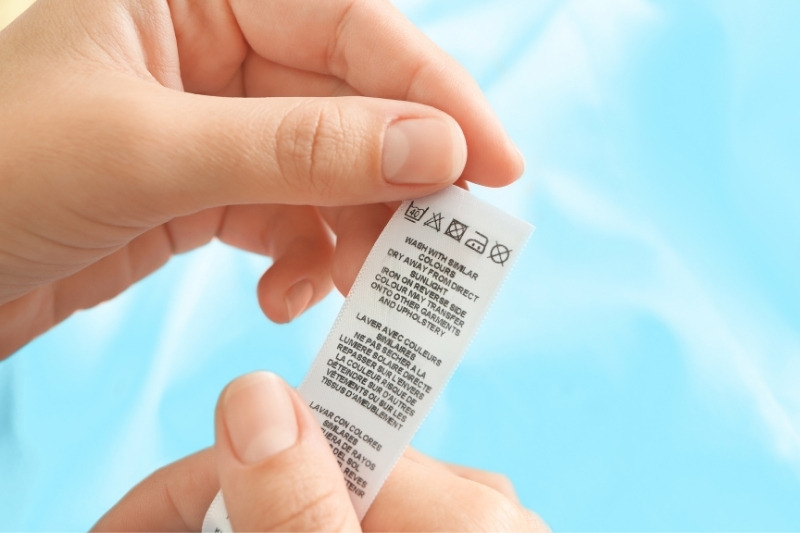
Always read the care label on your item of clothing before you clean it. The label will tell you how to care for the piece so you don’t ruin it.
If your garment doesn’t come with a care label (this does happen), or the print on the tag has worn (this happens more often than you think!), you should hand wash your item with a delicate detergent.
How to Wash Second-Hand Clothes for the First Time
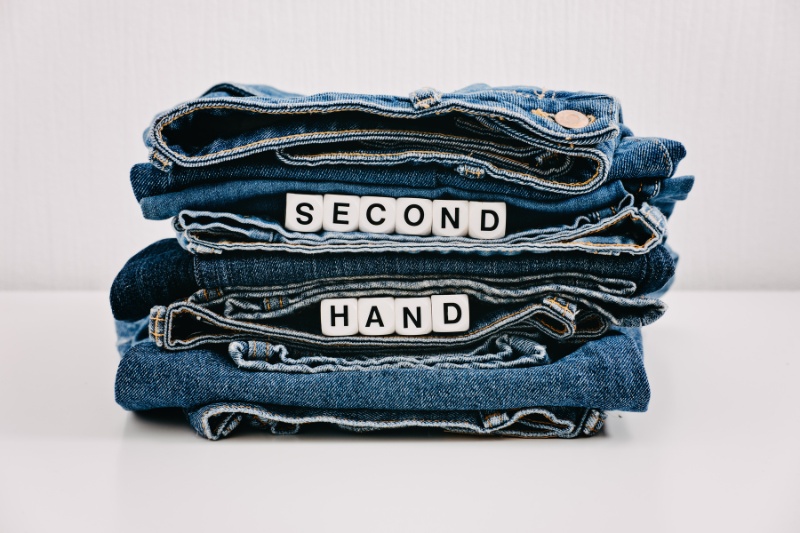
You must clean second-hand items before you wear them, even if they look immaculate! The garments could be ridden with bacteria that the naked eye cannot see. And if you were to wear said pieces, they could make your skin itchy or cause an allergic reaction.
Why risk it? Just clean the items! Follow the 3 Steps below to wash your pre-owned outfits.
Step 1: Read the tag
The first step to take when cleaning second-hand clothes is to check the care tags on every item to see how each piece should be maintained.
The tags will tell you to hand wash, machine wash, or dry clean the garments. Based on this information, you can skip to the relevant section below.
As noted earlier, if the writing on the tag has disappeared or there isn’t a tag, assume the garment must be hand washed with a delicate detergent.
Step 2: The washing method
Machine wash
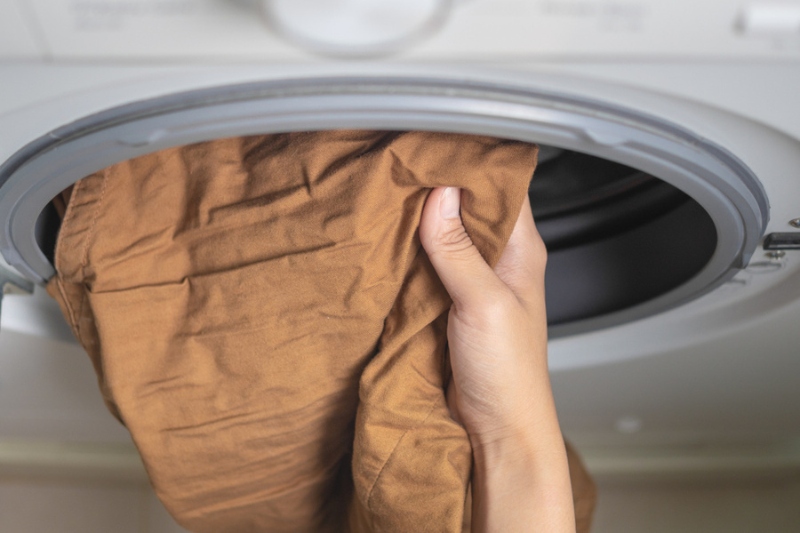
Steps to follow:
- Fill a bowl/bathtub with warm water – the water should not be boiling.
- Add a little detergent to the water (see packaging for dose) – remember to use a delicate solution for delicate materials.
- Clean one item at a time – to prevent potential colour runs.
- Submerge the garment in the water.
- Wait a few hours while the pre-soak takes place.
- Remove the garment from the water.
- Rinse it clean – hold the item under the cold water tap.
- Wash the item in the washing machine.
- Choose a short cycle.
- Pick a low temperature.
- Add a suitable detergent.
- Add some laundry sanitiser to the washer to sanitise the laundry.
- Inspect the item at the end of the wash. Re-wash, if necessary.
- Dry the garment – see Step 3.
- Repeat for the other pre-loved clothes.
Tip: Remember to pre-treat stains and make any repairs before you wash your items.
Hand wash
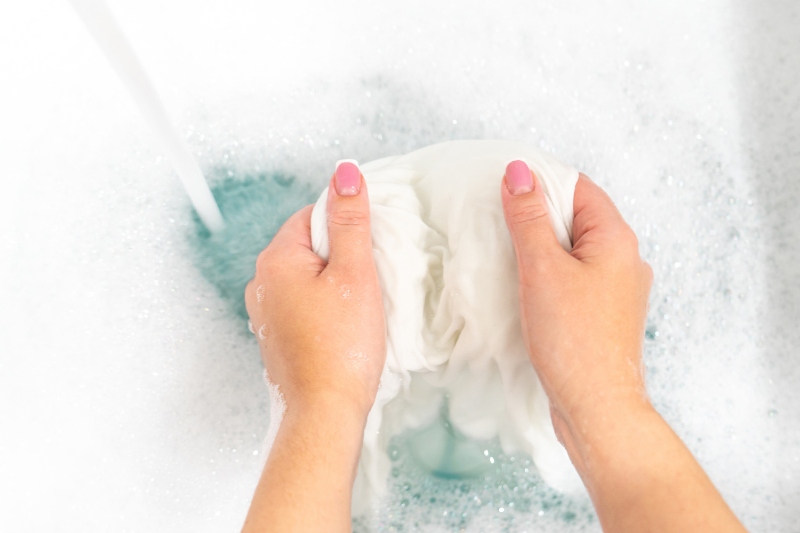
Steps to follow:
- Put some gloves on.
- Fill a bowl with warm water. Make sure the water isn’t boiling.
- Add some detergent to the water (see packaging for dose). Use a delicate solution for delicate materials and a biological detergent for hard-wearing fabrics.
- Ensure that the detergent you use is also hand-wash friendly. You don’t want to stick your hands into a chemical-laden solution that could irritate your skin.
- Clean one item at a time to prevent potential colour runs and damage.
- Submerge the piece in the water. Make sure the water completely covers it.
- Wait a few minutes.
- Agitate the garment when it is in the water. Pay close attention to extra dirty spots like under the armpits when hand washing clothes.
- Remove the garment from the water.
- Rinse it clean by holding the item under the cold-water tap.
- Re-wash the item, repeating the steps above.
- Rinse the garment so that it’s free from soapy residue.
- Dry the garment – see Step 3.
- Repeat the steps above for the rest of your new pre-loved clothes.
Tip: Remember to pre-treat stains and make any repairs before you wash your items.
Steam clean
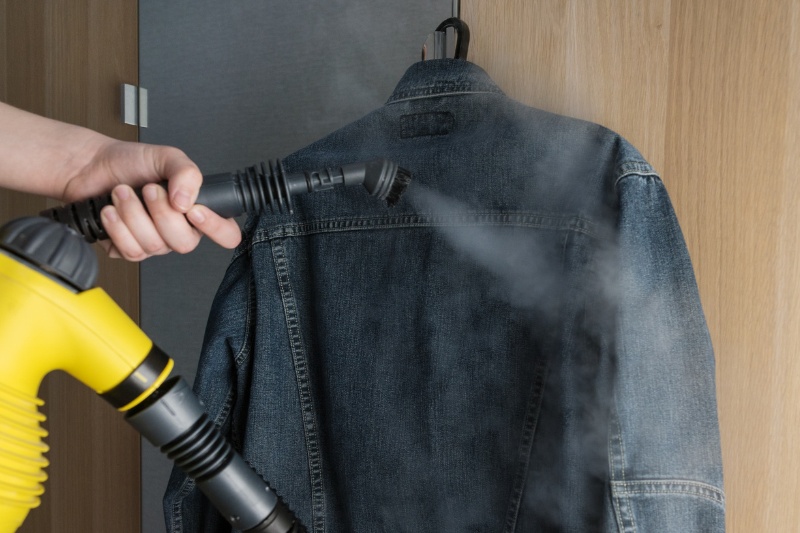
This isn’t an essential step and won’t be suitable for all materials. But if you want to take your cleaning activity one step further, you could steam your second-hand garment after washing it.
A quick steam clean may remove lingering aromas, wrinkles and slight blemishes. In turn, it may make the garment more hygienic for you.
Dry cleaners
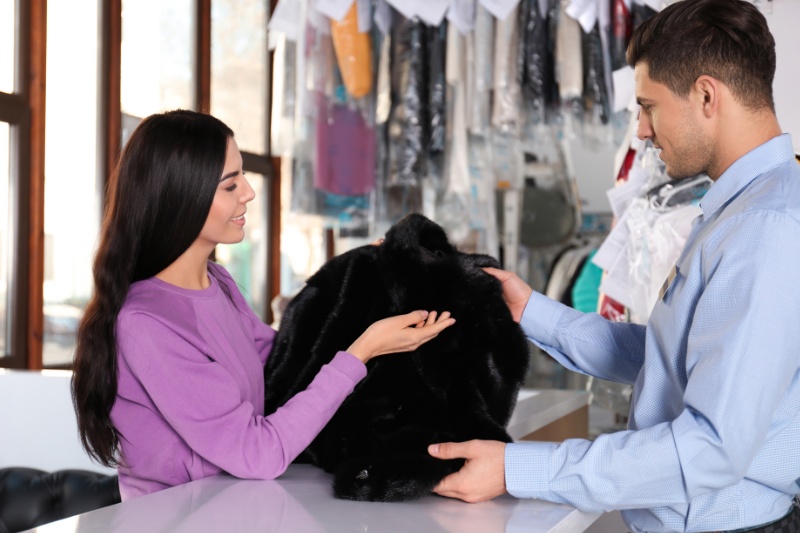
As mentioned above, you must always read the care label on your garment to find out how it needs to be washed.
You’ll see the words ‘Dry Clean Only’ on some outfits, and if you do see this, you should adhere to the instruction! If you don’t, you risk shrinking or damaging your just-bought garment by washing it incorrectly.
It is possible to ‘dry clean’ some outfits at home. But it can be tricky. So, in most cases, it’s easier to ask a professional for help.
Step 3: Dry
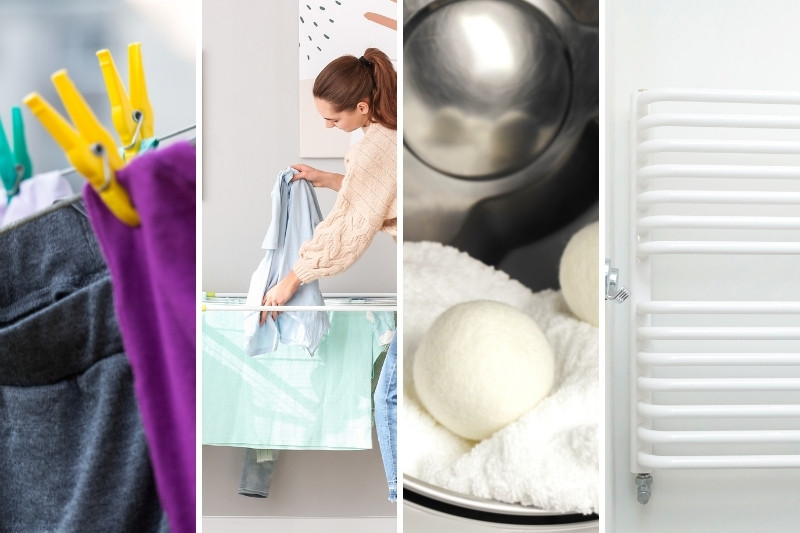
There are multiple ways you can dry second-hand clothes, these include:
- Line drying
- Tumble drying
- Using a heated airer or pod
- Leaving a garment flat on a surface to dry naturally
To dry your pre-loved garment, check the advice on the care label and follow the instructions.
If the tag states you can tumble dry the item, you can do so. But stick to the cycle and temperature that is stated on the care label. You don’t want to shrink your new outfit before you’ve had a chance to wear it.
If there isn’t a tag, don’t put your item in a tumble dryer, air dry it instead. Similarly, if your outfit is vintage, full of embellishments or delicate, steer clear of the tumble dryer and choose a natural drying method.
When handling delicate materials like silk and wool, it is better to roll the item up in a dry towel to extract excess moisture out of it. And then, leave the garment resting on the towel to air dry over several hours.
How to Remove Odours from Second-Hand Clothes

Second-hand clothes can be pongy! And this stench can be quite overwhelming at times. There are, however, ways you can manage the odour. Follow the steps below:
- Wash your items by following the cleaning steps outlined above.
- Then fill a bucket with bicarbonate of soda and water, pop one item in the bucket and allow it to soak overnight. This should neutralise the odours.
- Remove your item from the water the following day and smell it.
- If the item doesn’t smell, wash it as usual. If the piece still smells, wash it, but add a cup of white vinegar to the rinse cycle.
- Dry the item outside on the line to remove any lingering aromas.
- Use a fabric refresher if need be.

Bethan has a passion for exploring, reading, cooking and gardening! When she’s not creating culinary delights for her family, she’s concocting potions to keep her house clean!
